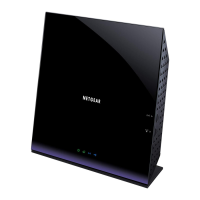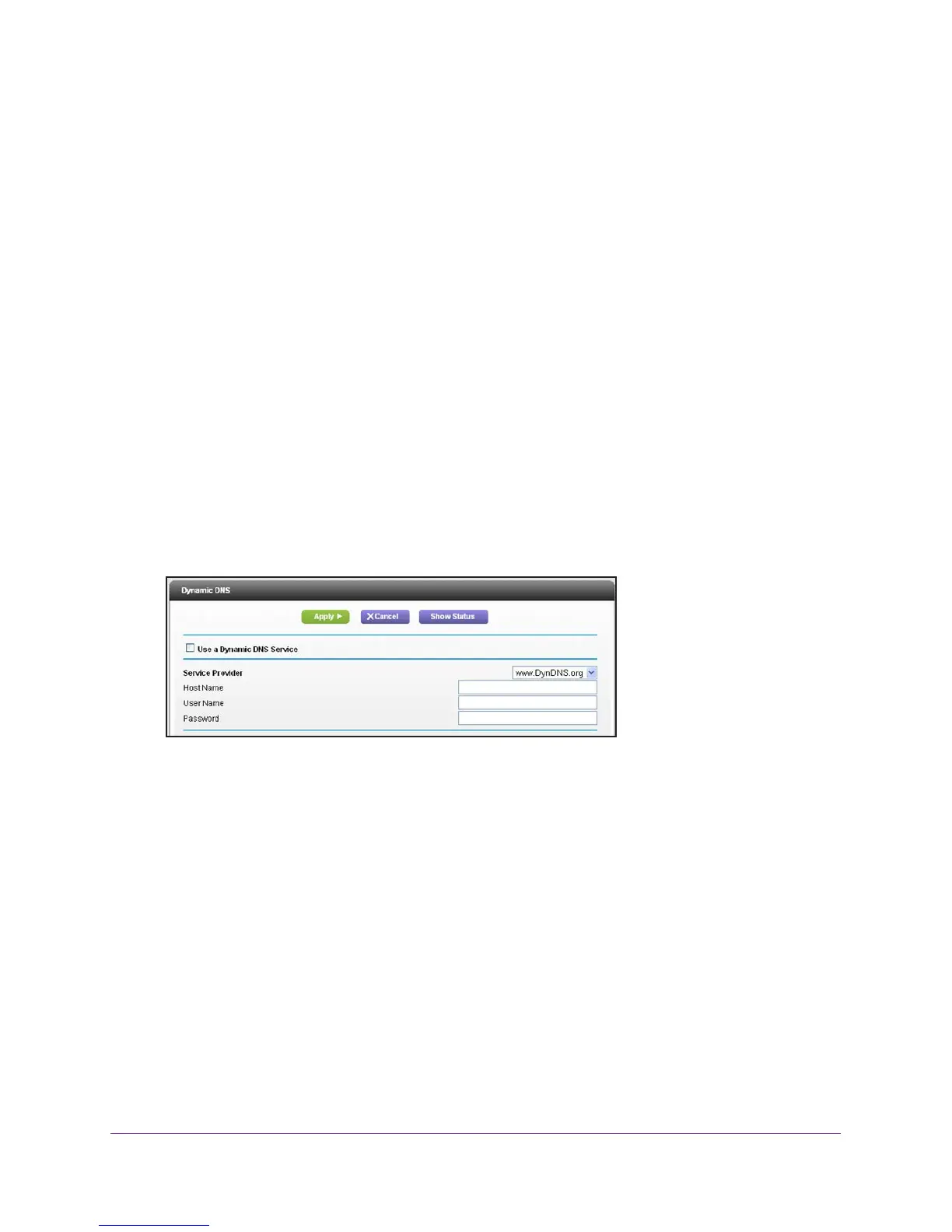Advanced Settings
97
R6250 Smart WiFi Router
Dynamic DNS
If your Internet service provider (ISP) gave you a permanently assigned IP address, you can
register a domain name and have that name linked with your IP address by public Domain
Name Servers (DNS). However, if your Internet account uses a dynamically assigned IP
address, you do not know in advance what your IP address will be, and the address can
change frequently. In this case, you can use a commercial Dynamic DNS service. This type
of service lets you register your domain to their IP address and forwards traffic directed at
your domain to your frequently changing IP address.
If your ISP assigns a private WAN IP address (such as 192.168.x.x or 10.x.x.x), the Dynamic
DNS service does not work because private addresses are not routed on the Internet.
Your router contains a client that can connect to the Dynamic DNS service provided by
DynDNS.org. First visit their website at http://www
.dyndns.org and obtain an account and
host name that you configure in the router. Then, whenever your ISP-assigned IP address
changes, your router automatically contacts the Dynamic DNS service provider, logs in to
your account, and registers your new IP address. If your host name is hostname, for
example, you can reach your router at http://hostname.dyndns.org.
To set up Dynamic DNS:
1. Select Advanced >
Advanced Setup > Dynamic DNS.
2. Register for an account with one of the Dynamic DNS service providers whose URLs are in
the Service Provider list.
For example, for DynDNS.org, select www
.dyndns.org.
3. Select the Use a Dynamic DNS Service check box.
4. Select the URL of your Dynamic DNS service provider
.
5. T
ype the host name (or domain name) that your Dynamic DNS service provider gave you.
6. T
ype the user name for your Dynamic DNS account.
This is the name that you use to log in to your account, not your host name.
7. T
ype the password (or key) for your Dynamic DNS account.
8. Click Apply.
Your changes are saved.

